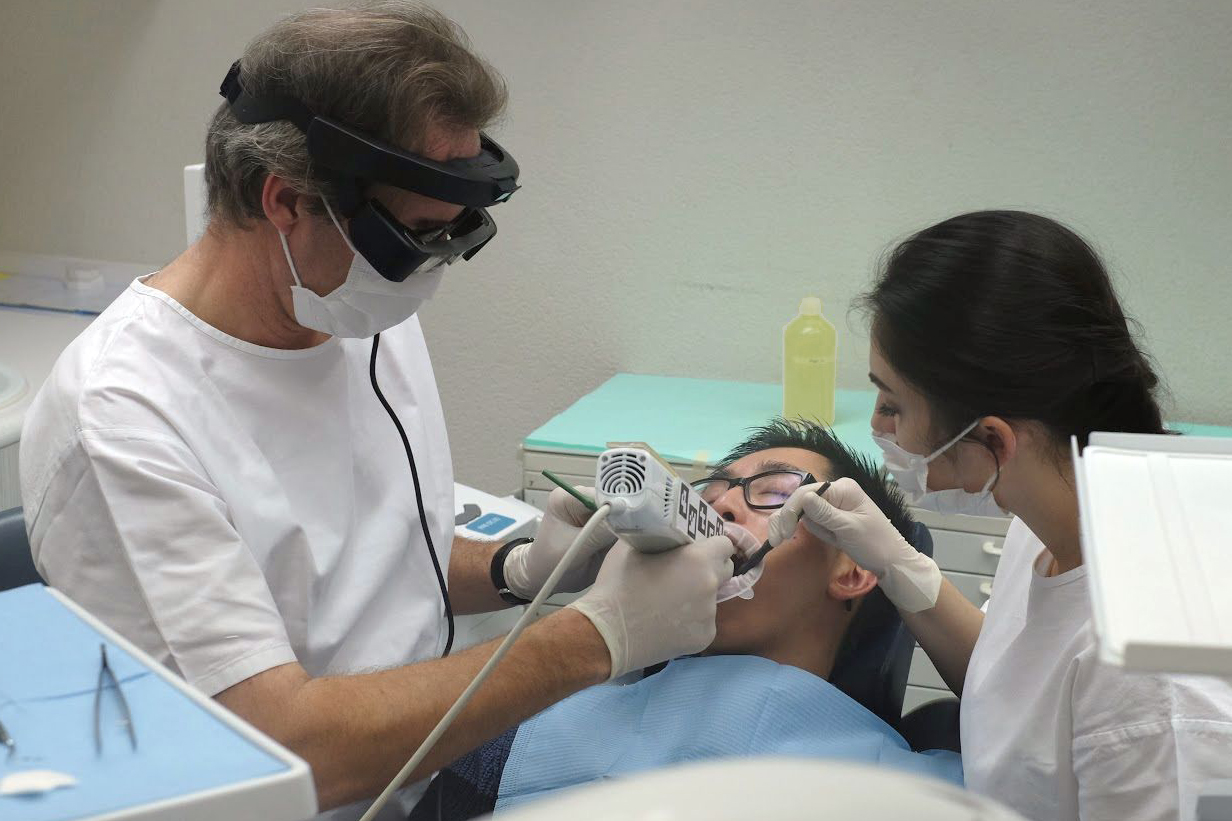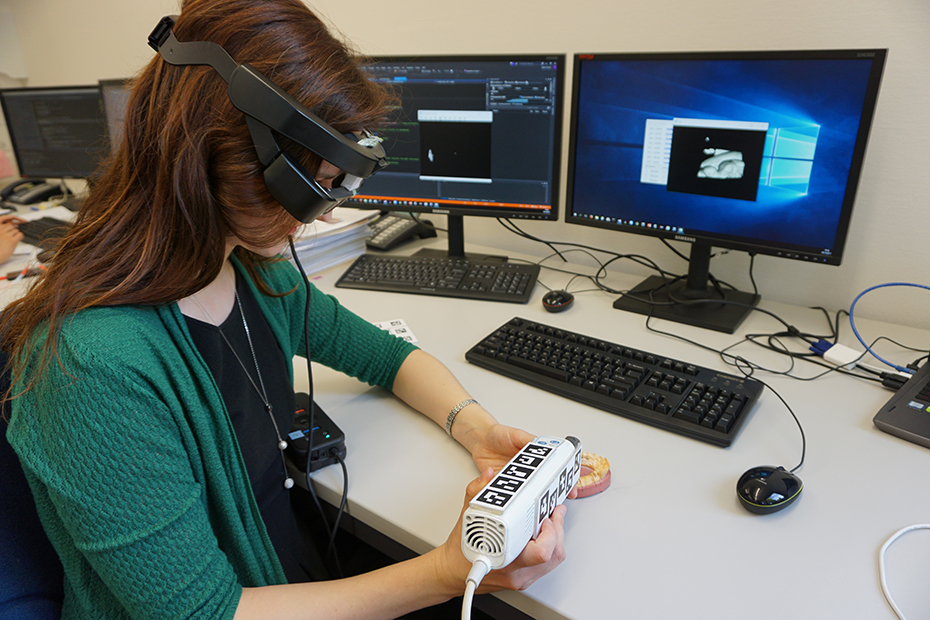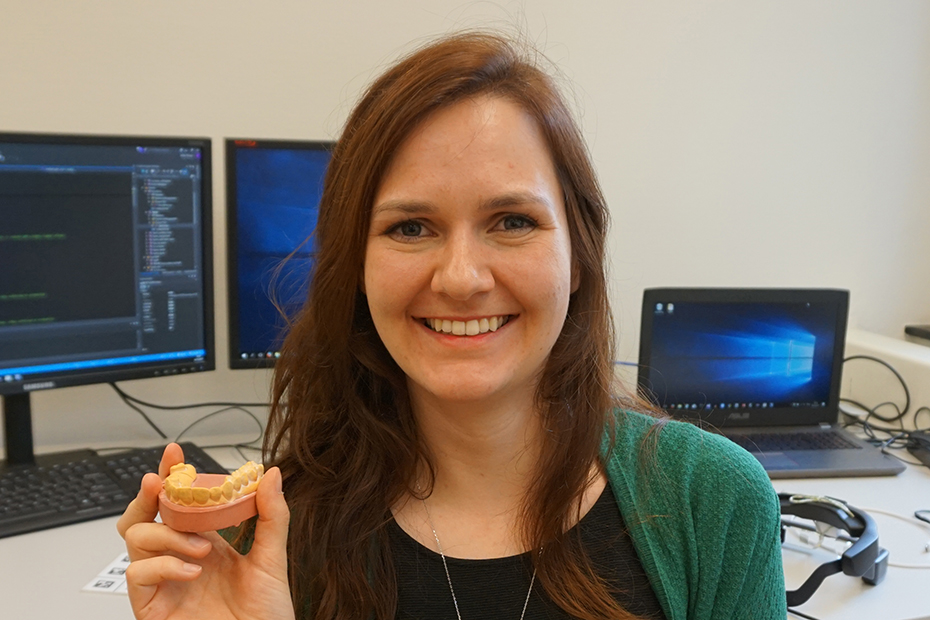Augmented reality for dentists
The ETH Computer Vision Lab and the company MHT Optic Research AG want to improve dental treatments. Janine Thoma explains how their development makes the lives of patients and dentists easier and more comfortable.

Why do dentists need augmented reality?
Digital technologies are increasingly entering dental offices. One example is the intra-oral scanning of teeth which provides immediately available digital dental models and is much more comfortable for patients than conventional dental impressions. However, today this technology involves a separate screen where the dentist can follow the progress of the scanning. It is difficult to see directions on a screen and simultaneously translate them into directions in real life. And what is more, the attention of the dentist is diverted from the patient. For such applications, augmented reality provides a good solution.
How do you augment the reality of dentists?
We are developing an augmented reality interface for the intra-oral scanning system of our industrial partner MHT Optic Research AG. The idea is to use head-mounted displays for the dentists to visualize the progress of scanning. This way the dentist sees the real world as well as the scanned teeth as virtual objects at the same time.
What are the challenges in this project?
One big challenge is to display the scanned teeth as a virtual object in exactly the right position overlaying the patient’s teeth. For this, the position of the patient’s teeth has to be tracked continuously while the head-mounted display is moving. Tracking teeth is extremely difficult because of the specular, translucent surface. But we found a solution to estimate the position of the teeth indirectly by tracking the scanner instead of the teeth. As the scanner builds a model of the teeth, it always knows their position. For a reliable tracking, we use markers mounted onto the scanner.

Are there also challenges related to the head-mounted display?
Yes, it has to be calibrated in a special way. In contrast to normal cameras, a user feedback is required for calibration. This feedback depends on the anatomical position of the dentist’s eyes and also on how s/he wears the head-mounted display. We have developed a user-friendly calibration procedure that can be performed easily each time the user puts the glasses on.
Do you think augmented reality will someday be the standard for such applications?
The future of this technology depends on how available and comfortable augmented reality glasses will be. Currently, the available glasses are not very comfortable and not ready for a mass market. But hardware improves fast in all areas and there are large companies doing research in this field. I think that head-mounted displays will become suitable for daily use soon. This will pave the way for augmented reality. In contrast to portable devices augmented reality devices have the advantage that your hands are free. I believe that in the future augmented reality will make our lives easier in many areas.

Contact/Links:
Do you want to subscribe to ETH News for Industry?
Subscribe to our external page newsletter
Are you looking for research partners at ETH Zurich?
Contact ETH Industry Relations